使用scikit-learn進行文本分類
多標簽分類格式
對于多標簽分類問題而言,一個樣本可能同時屬于多個類別。如一個新聞屬于多個話題。這種情況下,因變量yy需要使用一個矩陣表達出來。
而多類別分類指的是y的可能取值大于2,但是y所屬類別是唯一的。它與多標簽分類問題是有嚴格區別的。所有的scikit-learn分類器都是默認支持多類別分類的。但是,當你需要自己修改算法的時候,也是可以使用scikit-learn實現多類別分類的前期數據準備的。
多類別或多標簽分類問題,有兩種構建分類器的策略:One-vs-All及One-vs-One。下面,通過一些例子進行演示如何實現這兩類策略。
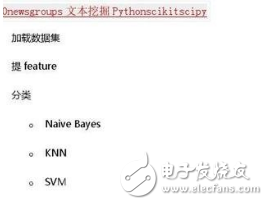
#from sklearn.preprocessing import MultiLabelBinarizery = [[2,3,4],[2],[0,1,3],[0,1,2,3,4],[0,1,2]]MultiLabelBinarizer().fit_transform(y)array([[0, 0, 1, 1, 1], [0, 0, 1, 0, 0], [1, 1, 0, 1, 0], [1, 1, 1, 1, 1], [1, 1, 1, 0, 0]])One-Vs-The-Rest策略
這個策略同時也稱為One-vs-all策略,即通過構造K個判別式(K為類別的個數),第ii個判別式將樣本歸為第ii個類別或非第ii個類別。這種分類方法雖然比較耗時間,但是能夠通過每個類別對應的判別式獲得關于該類別的直觀理解(如文本分類中每個話題可以通過只屬于該類別的高頻特征詞區分)。
多類別分類學習
from sklearn import datasetsfrom sklearn.multiclass import OneVsRestClassifierfrom sklearn.svm import LinearSVCiris = datasets.load_iris()X,y = iris.data,iris.targetOneVsRestClassifier(LinearSVC(random_state = 0)).fit(X,y).predict(X)array([0, 0, 0, 0, 0, 0, 0, 0, 0, 0, 0, 0, 0, 0, 0, 0, 0, 0, 0, 0, 0, 0, 0, 0, 0, 0, 0, 0, 0, 0, 0, 0, 0, 0, 0, 0, 0, 0, 0, 0, 0, 0, 0, 0, 0, 0, 0, 0, 0, 0, 1, 1, 1, 1, 1, 1, 1, 1, 1, 1, 1, 1, 1, 1, 1, 1, 1, 1, 1, 1, 2, 1, 1, 1, 1, 1, 1, 1, 1, 1, 1, 1, 1, 2, 2, 1, 1, 1, 1, 1, 1, 1, 1, 1, 1, 1, 1, 1, 1, 1, 2, 2, 2, 2, 2, 2, 2, 2, 2, 2, 2, 2, 2, 2, 2, 2, 2, 2, 2, 2, 2, 2, 2, 2, 2, 2, 2, 2, 2, 1, 2, 2, 2, 1, 2, 2, 2, 2, 2, 2, 2, 2, 2, 2, 2, 2, 2, 2, 2, 2])
多標簽分類學習
Kaggle上有一個關于多標簽分類問題的競賽:Multi-label classification of printed media articles to topics(地址:https://www.kaggle.com/c/wise-2014)。
關于該競賽的介紹如下:
This is a multi-label classification competition for articles coming from Greek printed media. Raw data comes from the scanning of print media, article segmentation, and optical character segmentation, and therefore is quite noisy. Each article is examined by a human annotator and categorized to one or more of the topics being monitored. Topics range from specific persons, products, and companies that can be easily categorized based on keywords, to more general semantic concepts, such as environment or economy. Building multi-label classifiers for the automated annotation of articles into topics can support the work of human annotators by suggesting a list of all topics by order of relevance, or even automate the annotation process for media and/or categories that are easier to predict. This saves valuable time and allows a media monitoring company to expand the portfolio of media being monitored.
我們從該網站下載相應的數據,作為多標簽分類的案例學習。
數據描述
這個文本數據集已經用詞袋模型進行形式化表示,共201561個特征詞,每個文本對應一個或多個標簽,共203個分類標簽。該網站提供了兩種數據格式:ARFF和LIBSVM,ARFF格式的數據主要適用于weka,而LIBSVM格式適用于matlab中的LIBSVM模塊。這里,我們采用LIBSVM格式的數據。
數據的每一行以逗號分隔的整數序列開頭,代表類別標簽。緊接著是以\t分隔的id:value對。其中,id為特征詞的ID,value為特征詞在該文檔中的TF-IDF值。
形式如下。
58,152 833:0.032582 1123:0.003157 1629:0.038548 ...
數據載入
# load modulesimport os import sysimport numpy as npfrom sklearn.datasets import load_svmlight_filefrom sklearn.preprocessing import LabelBinarizerfrom sklearn.preprocessing import MultiLabelBinarizerfrom sklearn.linear_model import LogisticRegressionfrom sklearn.multiclass import OneVsRestClassifierfrom sklearn import metrics# set working directoryos.chdir("D:\\my_python_workfile\\Thesis\\kaggle_multilabel_classification")# read filesX_train,y_train = load_svmlight_file("./data/wise2014-train.libsvm",dtype=np.float64,multilabel=True)X_test,y_test = load_svmlight_file("./data/wise2014-test.libsvm",dtype = np.float64,multilabel=True)
模型擬合及預測
# transform y into a matrixmb = MultiLabelBinarizer()y_train = mb.fit_transform(y_train)# fit the model and predictclf = OneVsRestClassifier(LogisticRegression(),n_jobs=-1)clf.fit(X_train,y_train)pred_y = clf.predict(X_test)
模型評估
由于沒有關于測試集的真實標簽,這里看看訓練集的預測情況。
# training set resulty_predicted = clf.predict(X_train)#report #print(metrics.classification_report(y_train,y_predicted))import numpy as npnp.mean(y_predicted == y_train)0.99604661023482433
保存結果
# write the outputout_file = open("pred.csv","w")out_file.write("ArticleId,Labels\n")id = 64858for i in xrange(pred_y.shape[0]): label = list(mb.classes_[np.where(pred_y[i,:]==1)[0]].astype("int")) label = " ".join(map(str,label)) if label == "": # if the label is empty label = "103" out_file.write(str(id+i)+","+label+"\n")out_file.close()One-Vs-One策略
One-Vs-One策略即是兩兩類別之間建立一個判別式,這樣,總共需要K(K?1)/2K(K?1)/2個判別式,最后通過投票的方式確定樣本所屬類別。
多類別分類學習
from sklearn import datasetsfrom sklearn.multiclass import OneVsOneClassifierfrom sklearn.svm import LinearSVCiris = datasets.load_iris()X,y = iris.data,iris.targetOneVsOneClassifier(LinearSVC(random_state = 0)).fit(X,y).predict(X)array([0, 0, 0, 0, 0, 0, 0, 0, 0, 0, 0, 0, 0, 0, 0, 0, 0, 0, 0, 0, 0, 0, 0, 0, 0, 0, 0, 0, 0, 0, 0, 0, 0, 0, 0, 0, 0, 0, 0, 0, 0, 0, 0, 0, 0, 0, 0, 0, 0, 0, 1, 1, 1, 1, 1, 1, 1, 1, 1, 1, 1, 1, 1, 1, 1, 1, 1, 1, 1, 1, 2, 1, 2, 1, 1, 1, 1, 1, 1, 1, 1, 1, 1, 2, 1, 1, 1, 1, 1, 1, 1, 1, 1, 1, 1, 1, 1, 1, 1, 1, 2, 2, 2, 2, 2, 2, 2, 2, 2, 2, 2, 2, 2, 2, 2, 2, 2, 2, 2, 2, 2, 2, 2, 2, 2, 2, 2, 2, 2, 2, 2, 2, 2, 2, 2, 2, 2, 2, 2, 2, 2, 2, 2, 2, 2, 2, 2, 2, 2, 2])參考文獻
-
文本分類
+關注
關注
0文章
18瀏覽量
7397
原文標題:使用scikit-learn實現多類別及多標簽分類算法
文章出處:【微信號:AI_shequ,微信公眾號:人工智能愛好者社區】歡迎添加關注!文章轉載請注明出處。
發布評論請先 登錄
Python機器學習庫談Scikit-learn技術

NLPIR平臺在文本分類方面的技術解析
基于Python的scikit-learn編程實例
textCNN論文與原理——短文本分類
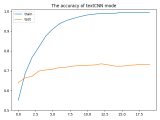





 詳細解析scikit-learn進行文本分類
詳細解析scikit-learn進行文本分類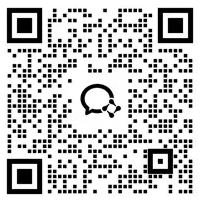

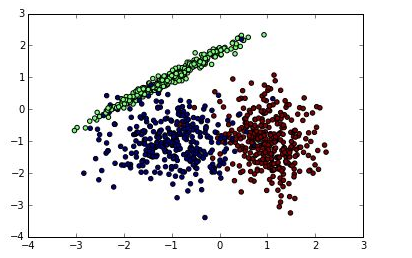
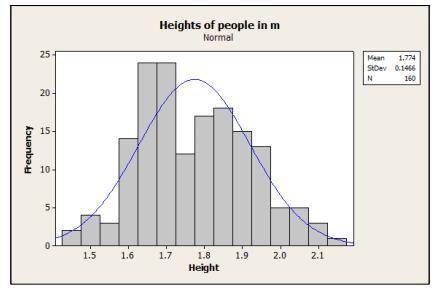










評論